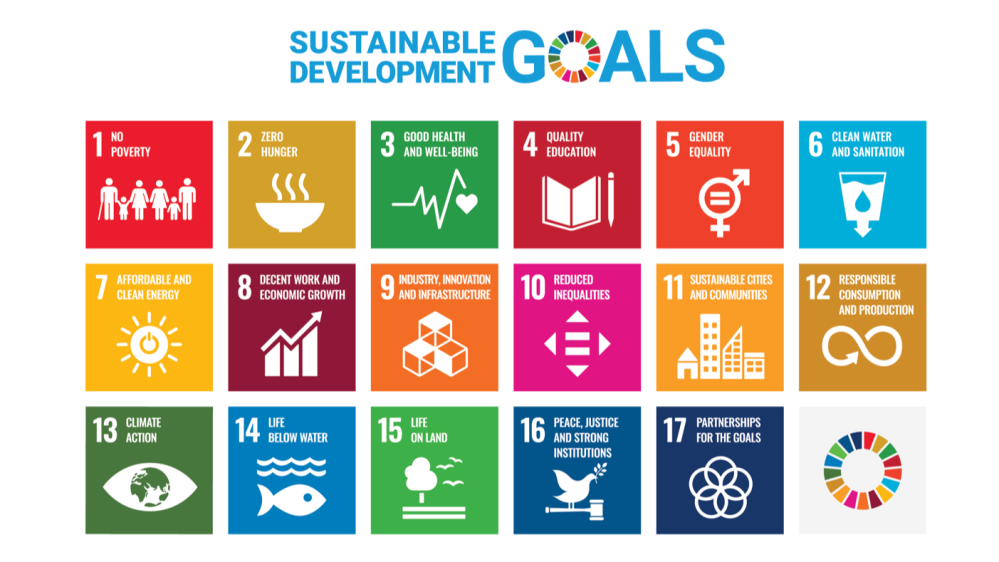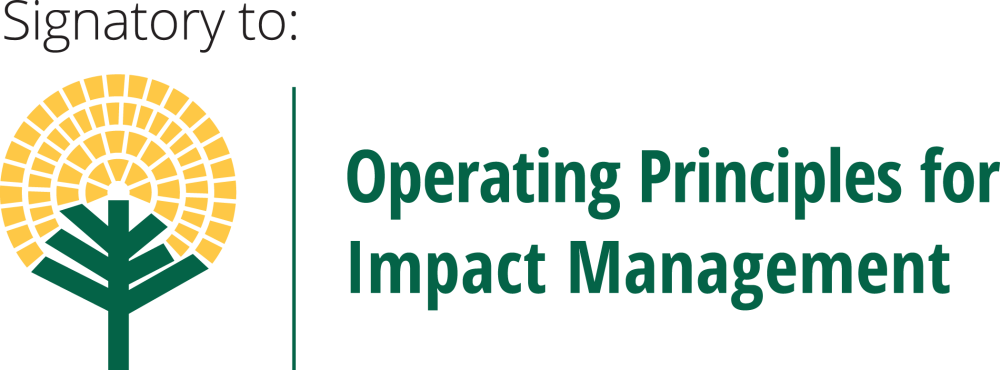
Learn about responsAbility and
Impact Investing
Why invest with impact?
GENERATE FINANCIAL AND IMPACT RETURNS
Financial return
Social return
Environmental return
CONTRIBUTE TO THE SDGS
Achieving the United Nation's Sustainable Development Goals by 2030 is crucial for a healthy and prosperous planet.
DIVERSIFY YOUR PORTFOLIO
Regional diversification
Thematic diversification
Uncorrelated to capital markets
How responsAbility generates and measures impact
STEP 1 : Selection of impact strategies that target specific SDGs
Every fund applies 3 impact strategies to target and monitor its positive impact. To quantify this impact, a score is applied using a framework similar to the Operating Principles for Impact Management's 5 dimensions and metrics that utilize industry definitions (IRIS+, GOGLA, 2X). Please note that while we support the UN SDGs, we are not associated with the UN and our funds are not endorsed by them.

STEP 2 : Strategies are applied to the 5 Dimensions of the Impact Principles

The 5 Dimension process explained
01 What problems are we addressing?
Impact Narrative
This dimension looks at the type of issue addressed under the impact strategy and the scale of the challenge in that market.Under our system, this is directly linked to the SDGs, with strategies directly addressing broader issues around the Goals.
How is it reflected in the Impact Scoring?
Most of the metrics used for this dimension are taken from the SDG Index, an index created to show how far each country is from fulfilling each SDG. Additional metrics are sometimes taken from other context indicators e.g.the Global Findex.
02 Who will benefit?
Impact Narrative
Looks at who is affected by the problem. As an impact investor investing only in emerging markets, responsAbility typically operates in countries where many development problems are most acute. Nonetheless, across our markets, the depth and scale of the relevant challenges can still vary greatly.
How is it reflected in the Impact Scoring?
Shown in a range of indicators relating to:
Scale of the challenge in the country of investment, e.g.
- How many people have access to a bank account?
- How many people have access to electricity?
- What is the national average for share of female management?
- Average loan size (as a proxy to demonstrate reaching low-income households)
- Average payment size to farmers (as a proxy to demonstrate reaching smallholders)
- Share of female beneficiaries
03 How big is the impact?
Impact Narrative
Demonstrates the scale and scope of impact achieved by the portfolio company.
The size of the development challenge remains substantial in many emerging markets, yet investment remains scarce.
To demonstrate efficient allocation of investment, portfolio companies' business models must be able to demonstrate that they are able to provide a minimum level of impact intensity in a way that can be scaled across large numbers of end beneficiaries.
How is it reflected in the Impact Scoring?
Our model uses indicators taken from portfolio companies prior to investment. Indicators consists of a variety of metrics relating to scale and intensity. For example:
Scale
- Number of borrowers reached (by a microfinance institution)
- Number of products sold (by an off-grid energy solutions provider)
- Amount spent on training (for microfinance clients, smallholder farmers etc.)
- Type of certification (for sustainable agriculture)
04 What is our contribution to the impact?
Impact Narrative
Shows how much of the impact achieved by the portfolio company can be attributed to our investment. Due to the scarcity of external funding in many developing countries, allocating investment where it can really make a difference is critical.
In addition, responsAbility only invests in private debt and private equity, engaging directly with organisations to provide tailored funding solutions. Thus our impact is considerably greater than it would be with listed equities on the secondary market.
In some cases, the degree of our engagement goes even further. For certain portfolio companies we provide technical assistance to improve profitability and maximize impact. For our equity investments, we also aim to achieve the same goals by providing strategic advice at board level.
How is it reflected in the Impact Scoring?
Contribution is demonstrated via four main axes:
- Is local funding widely available?
- What is responsAbility’s share of overall funding provided to the portfolio company and how long has responsAbility been working with the portfolio company?
- Are additional elements of transaction structuring used to address market failures and further assist portfolio companies? E.g. long-term funding, mezzanine finance, local currency funding.
- Does responsAbility provide, or expect to provide, technical assistance or strategic engagement of another kind (active shareholder management, engagement on ESG issues, helping portfolio companies to launch new products etc.)?
05 How do we address the risk?
Any investment strategy that aims to achieve impact must acknowledge the risk that this impact is not achieved, or that in fact the investment achieves a negative impact.
Lack of impact
The absence of impact is difficult to reflect in a quantitative sense, and as a result is not formally integrated into our scoring. We will communicate with portfolio companies where we see a deterioration in their impact performance over time. Persistent failure to address such deterioration under existing criteria may lead to lack of refinancing.
In a broader sense, by following the evolution of the portolio company's performance, and adapting our metrics, we are able to adjust our criteria to ensure that our impact narrative is met.
Negative impact
We apply strict criteria relating to Environmental, Social and Governance (ESG) risks throughout the due diligence process and after investment. Monitoring the ESG evolution of our portfolio enables us to adapt our processes, while intervening with specific portfolio companies to help them adapt theirs.


